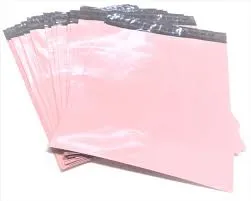Efficient Techniques for Wrapping and Securing Pallets for Safe Transport
The Essentials of Wrapping Pallets for Safe Transportation
In the world of logistics and supply chain management, the wrapping of pallets is a critical process that ensures the safe transportation of goods. Proper pallet wrapping not only protects items from damage but also enhances stability during transit. This article delves into the techniques, materials, and importance of effectively wrapping pallets.
Understanding Pallet Wrapping
Pallet wrapping involves encasing goods stacked on a pallet with plastic film or other materials to secure them for shipping. This process aims to unify the items into a single, stable unit, minimizing the risk of shifting, toppling, or sustaining damage during movement. Whether it’s for local distribution, international shipping, or storage, effective pallet wrapping is vital.
Materials Used for Wrapping
The choice of materials plays a significant role in the success of pallet wrapping. The most commonly used material is stretch film, which is elastic and forms a tight hold around the goods. There are two primary types of stretch film cast film and blown film. Cast film is quieter and easier to handle, while blown film offers better puncture resistance and stretchability.
Aside from stretch film, some businesses might opt for shrink wrap, which becomes tightly fitted when subjected to heat. Additionally, corner protectors and pallet wraps can be included to provide extra protection for delicate items. Moreover, using paper or biodegradable materials is gaining popularity in environmentally conscious companies, reflecting a shift towards sustainability in packaging practices.
Techniques for Effective Wrapping
The effectiveness of pallet wrapping significantly depends on the technique used. Here are some common methods
wrapping pallet

1. Bottom Up Method This involves starting the wrapping process from the bottom of the pallet and working upwards. Begin by securing the stretch film around the base of the pallet and then gradually move upwards, wrapping around the cargo consistently.
2. Figure-Eight Method This technique involves wrapping the film in a figure-eight pattern around the pallet. This method secures items effectively and promotes stability, making it less likely to topple during transit.
3. High-Tension Wrapping For extremely heavy or unstable loads, applying high tension while wrapping can create a more secure hold. However, care should be taken not to apply excessive tension that might deform the goods.
4. Layering For larger or heavier items, consider wrapping each layer independently before securing them all together. This method can help provide added support and minimize damage risk.
Importance of Proper Pallet Wrapping
The implications of improper pallet wrapping can be significant. Poorly wrapped pallets can lead to product damage, increased returns, and ultimately, financial loss. Furthermore, safety is a crucial concern; unstable pallets can pose a risk to workers handling them or lead to accidents during transportation.
In addition, effective pallet wrapping can contribute to efficient space utilization during shipping and storage. With tightly wrapped pallets, businesses can maximize the number of pallets loaded into a truck or stored in a warehouse, improving overall operational efficiency.
Conclusion
In conclusion, wrapping pallets is a fundamental aspect of logistics that should not be overlooked. By utilizing the right materials, mastering effective wrapping techniques, and understanding its significance, businesses can ensure the safe and efficient transport of their goods. In a competitive market where efficiency and safety are paramount, mastering the art of pallet wrapping is an investment in the integrity of products and the reliability of the supply chain.
-
No-Sew Methods for Making a Drawstring BagNewsAug.22,2025
-
The Problem with Plastic Trash Bags in LandfillsNewsAug.22,2025
-
Biodegradable Alternatives to Shirt BagsNewsAug.22,2025
-
Creative Ways to Reuse Poly Wrap Roll at HomeNewsAug.22,2025
-
Shipping Fragile Items Safely with Bubble MailersNewsAug.22,2025
-
Sustainable Alternatives to Plastic Shipping BagsNewsAug.22,2025
-
Have the freedom of customizing your custom mailers any way you want! Our dedicated packaging support will help deliver you the mailing experience you need to elevate your shipping experience to the next level! Start making a strong impression on your customers and stand out from your competitors! -
LIYA uses high quality raw materials which directly purchased from large enterprises domestic and overseas such as PetroChina, Sinopec, Sabic, Equate, ExxonMobil, Dow Chemical, Total, and Borouge, ensuring the price advantage and quality of the raw materials. -
LIYA uses high quality raw materials which directly purchased from large enterprises domestic and overseas such as PetroChina, Sinopec, Sabic, Equate, ExxonMobil, Dow Chemical, Total, and Borouge, ensuring the price advantage and quality of the raw materials.





